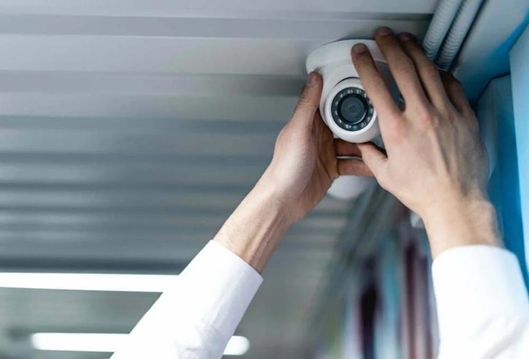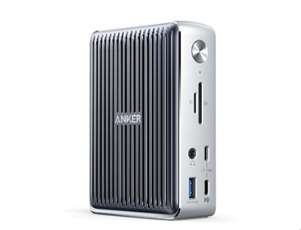Enhancing your home’s security
doesn’t always require a significant financial
investment. If you’ve got an unused webcam lying
around, you’re already halfway to building a simple yet
effective home security system. This guide will show you how to repurpose your
webcam as a security camera, walking you through the tools, setup process, and
essential safety tips to maximize its potential. Additionally, if you're
concerned about privacy and want to learn how to block neighbors security camera, this guide will provide tips for
safeguarding your personal space.

Why Use a Webcam as a Home
Security Camera?
The Cost-Saving Benefits
One of the main reasons people opt to use a
webcam as a security camera is the substantial cost savings.
Traditional security systems can be expensive, often costing hundreds or even
thousands of dollars, depending on the setup. Many people already own a webcam,
which can be repurposed for surveillance, drastically reducing the initial
investment. There are several free or affordable software solutions available,
such as iSpy, Yawcam, and ContaCam, that provide the necessary tools to
transform your existing webcam into a functional security camera. By utilizing
your webcam for security, you can avoid the high costs associated with buying
new equipment.
Versatility and Ease of
Use
Webcams are highly versatile and user-friendly.
Designed to be plug-and-play, most webcams require minimal setup, making them
ideal for a quick security solution. They come equipped with features like
adjustable focus, decent resolution, and built-in microphones, which can serve
well for basic security purposes. Their portability also allows you to move
them to different locations as needed, providing flexibility that’s not always
available with fixed, traditional security systems.
Ideal for Temporary or
Low-Cost Security Solutions
For renters, college students, or individuals who need
a temporary or cost-effective solution, using a webcam offers the perfect
balance between affordability and function. It’s an excellent option for those
living in temporary accommodations or who cannot install permanent security
systems.
What Do You Need to Turn a
Webcam into a Security Camera?
Hardware Requirements
To get started, you’ll need a functioning webcam that
connects to your computer via USB or another connection type. A computer or
laptop with sufficient processing power and available USB ports is essential to
support the webcam and the surveillance software you’ll be using. If you plan
to save footage for extended periods, an external hard drive can be useful for
additional storage.
Recommended Webcam
Security Software
The heart of converting your webcam into a security
camera lies in the software. Several popular programs can handle this task,
each with its own set of features that suit different needs:
- iSpy: One of the most powerful and flexible options, iSpy offers
motion detection, recording, and remote access.
- Yawcam: A free and lightweight option, Yawcam is easy to set up and
provides essential features like motion detection, FTP uploading, and
password protection.
- ContaCam: This free software is ideal for continuous surveillance and
includes features like motion detection, webcam recording, and time-lapse
videos.
These tools allow you to monitor live footage, record
video, and receive notifications if the camera detects movement, enhancing the
overall functionality of your webcam.
Network and Connectivity
Needs
For remote monitoring and real-time access, ensure that
your webcam and computer are connected to a stable internet connection. A
reliable Wi-Fi network or Ethernet connection will ensure that your setup
maintains consistent performance. The smoother the connection, the better your
real-time access and surveillance will be.
How to Set Up Your Webcam
as a Security Camera?
Step-by-Step Software
Installation Guide
- Download
and Install: First, download the webcam
security software of your choice (iSpy, Yawcam, ContaCam, etc.).
- Follow
the Installation Prompts: These software
tools typically offer guided installation, making it easy to connect your
webcam to the program.
- Configure
Security Preferences: Once installed,
adjust the software settings according to your preferences. You can
configure motion detection, recording schedules, and other features.
Adjusting Motion Detection
and Recording Settings
Many webcam security programs include customizable
motion detection settings. Adjust the sensitivity based on the size and
activity level of the area you’re monitoring. Setting up motion-triggered
recording will help you conserve storage by only recording when something moves
in the camera’s field of view.
Positioning Your Webcam
for Best Coverage
The placement of your webcam is crucial to ensure
comprehensive coverage. Place it at key entry points, such as doors or windows.
If possible, mount it at a higher angle to capture a broader area. You may also
consider testing various positions before finalizing the setup to ensure
optimal coverage.
Configuring Remote Access
for Real-Time Monitoring
Most webcam security software offers remote access
features, allowing you to monitor your feed from a smartphone or another
device. To enable this, set up a secure login within the software. This feature
is particularly useful when you’re away from home and want to check in on your
property in real time.
Is It Safe to Use a Webcam
for Home Security?
Addressing Privacy and
Security Risks
While using a webcam for home security is convenient,
it comes with potential risks. One major concern is unauthorized access to your
webcam feed. To prevent this, always ensure that your security software is
up-to-date. Many programs regularly release patches to address vulnerabilities.
Implementing Security
Measures
To further protect your setup, use strong, unique
passwords for both your webcam software and the remote access interface.
Additionally, disable remote access when you’re not using it, and ensure that
your computer's firewall is enabled. For added security, you may want to set up
a dedicated network for your security devices, keeping them separate from your
home’s general-use network. Taking these steps will help safeguard your system
against hackers and unauthorized users, allowing you to use your webcam as a
security camera with confidence.

Conclusion
Converting a webcam into a home security camera is an
affordable and practical solution for those seeking to enhance home security
without breaking the bank. With the right tools, a simple setup, and proper
security measures in place, a webcam can serve as an effective surveillance
device. While dedicated security cameras offer advanced features and greater
reliability, using a webcam is a great option for temporary setups or
budget-conscious homeowners. Make sure to prioritize security and regularly update
your system to ensure it stays protected.



